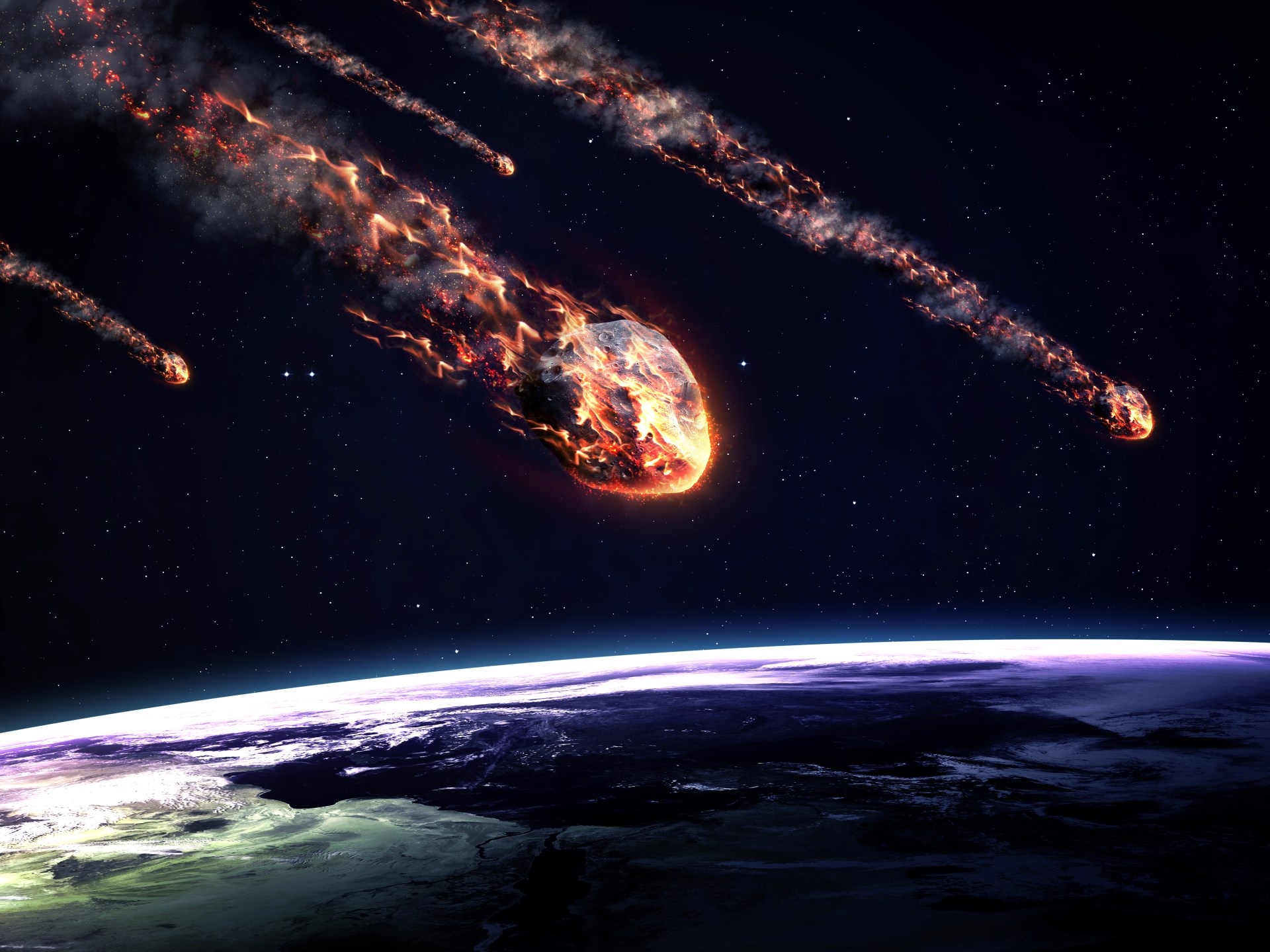A team of researchers has discovered at least two new minerals never before seen on Earth in a 15-ton meteorite found in Somalia, the ninth-largest meteorite ever found.
At the Symposium on Space Exploration on November 21, the findings were described by Chris Hurd, professor in the Department of Earth and Atmospheric Sciences and trustee of the University of Alberta.
A slice of the "Ali" meteorite contains two minerals never seen before on Earth (University of Alberta)
That's what makes it exciting
University of Alberta experts - one of Canada's most prominent public education institutes - played a major role in identifying and naming the two minerals that had never been seen before on Earth, and it appears that there is already a possible third mineral currently under study.
The two minerals - which were found - came from a single 70-gram chip that was sent to the University of Alberta for scientific classification.
Hurd noted that if researchers get more samples from the massive meteorite, there's a chance they'll find more.
According to the university's press release, Hurd says, "When you find a new mineral, this means that the actual geological conditions and rock chemistry were different from what was found before."
"That's what makes it so exciting: in this particular meteorite you have two formally described minerals that are completely new to science," he added.
It is expected - according to scientists - that the new minerals discovered in the meteorite may reveal evidence of the formation of asteroids.
The meteorite was found near the town of Al-Ali in the Somali region of Hiran (University of Alberta)
Most High meteorite
The meteorite was found near Al-Ali, in the Hiran region of Somalia, and was named after this town, "El Ali".
Scientists classified it as an iron meteorite, a type made of meteorite iron speckled with small silicate pieces.
Scientists named the first mineral elaliite after the meteorite, and the second mineral was named elkinstantonite after Lindy Elkins-Tanton, managing director of the ASU Interplanetary Initiative and principal investigator of the upcoming NASA mission. , which will send a probe to the asteroid "Psyche", which is rich in minerals, to obtain clues about how the planets of our solar system formed.
According to the university's press release, "Linde has done a lot of work on how planetary cores form, and how iron and nickel cores form, and our closest isotope is iron meteorites. So it made sense to name a mineral after her and acknowledge her contributions to science."
Details of the new minerals caught the attention of scientists while examining the meteorite piece (University of Alberta)
new metal
In collaboration with researchers at the University of California, Los Angeles and the Caltech, Hurd and his colleagues classified "Al-Ali" as an iron meteorite from more than 350 meteorites in that particular class.
Iron meteorites consist mostly of an alloy of nickel and iron, and are among the oldest sources of iron used by mankind.
The iron extracted from these meteorites is called meteoric iron.
Iron meteorites represent the equivalent of 5.7% of the number of meteorites that were found, and iron meteorites represent approximately 90% of the mass of all known meteorites.
While examining the meteorite fragment, details of the new minerals caught the scientists' attention.
While Hurd was analyzing the meteorite for classification, he saw something that caught his attention, so he called in Andrew Lowcock, head of the Microelectronic Probe Laboratory at the University of Alberta, for his expertise in the field.
Indeed, he participated in the description of new minerals.
Lowcock's quick identification of the two new minerals was possible because they had been created synthetically before, so he was able to match the composition of the newly discovered natural minerals by comparing the minerals to copies of them previously synthesized in a laboratory.
"The first day I did some analyses, I got at least two new minerals, which was extraordinary," Hurd says. "Most of the time it takes a lot more work than that to say there's a new mineral."
Researchers continue to examine new minerals to determine conditions for their meteorite formation (University of Alberta)
future scientific visions
Researchers continue to investigate new minerals to determine what they can tell us about the conditions of their meteorite formation.
"This is my area of expertise, how do you extract the geological processes and geological history of the asteroid that this rock was a part of. I never thought I would be involved in describing completely new minerals by working on a meteorite," Hurd says.
Hurd also noted that any new mineral discoveries could yield exciting uses in the future.
"Whenever a new material is known, scientists are also interested in it because of the potential uses in a wide range of things in society," he says.
The team is currently planning to further study meteorites to understand the conditions under which the original asteroid was formed.
While the meteorite's future remains uncertain, Hurd says researchers have received news that it has been moved to China in search of a potential buyer.
However, future scientific insights from the "Ali" meteorite may be in danger, as scientists indicated that transporting the meteorite to China in search of a potential buyer may limit scientists' access to the space rock for investigation.

